Who
Todd Bennett, President and Chief Operating Officer of Deer Valley Resort, Utah
Recorded on
April 19, 2023
About Deer Valley
Click here for a mountain stats overview
Owned by: Alterra Mountain Company
Located in: Park City, Utah
Year founded: 1981
Pass affiliations: 7 unrestricted days on Ikon Pass, five days with blackouts on Ikon Base Pass Plus
Reciprocal partners: Unlimited Deer Valley season passholders receive one day each at Alta, Brighton, and Snowbird
Closest neighboring ski areas: Park City Mountain Resort (5 minutes), Utah Olympic Park (18 minutes), Woodward Park City (20 minutes), Solitude (1 hour), Snowbird (1 hour), Brighton (1 hour, 8 minutes), Alta (1 hour, 8 minutes) – travel times vary considerably with weather and traffic; if U.S. Americans could summon a worldview that extends beyond their dashboards, they would understand that this entire megaplex could be connected with a handful of gondolas, reducing traffic and emissions in the Wasatch by about 40 billion percent.
Base elevation: 6,570 feet at Jordanelle base
Summit elevation: 9,570 feet at top of Empire
Vertical drop: 3,000 feet, though this cannot be skied contiguously – the longest high-quality continuous vertical drops are on Bald Mountain, at around 1,750 vertical feet.
Skiable Acres: 2,026
Average annual snowfall: 300 inches
Trail count: 103
Lift count: 27 (1 six-passenger gondola, 14 high-speed quads, 5 triples, 1 double, 1 platter serving private homes, 5 conveyors)
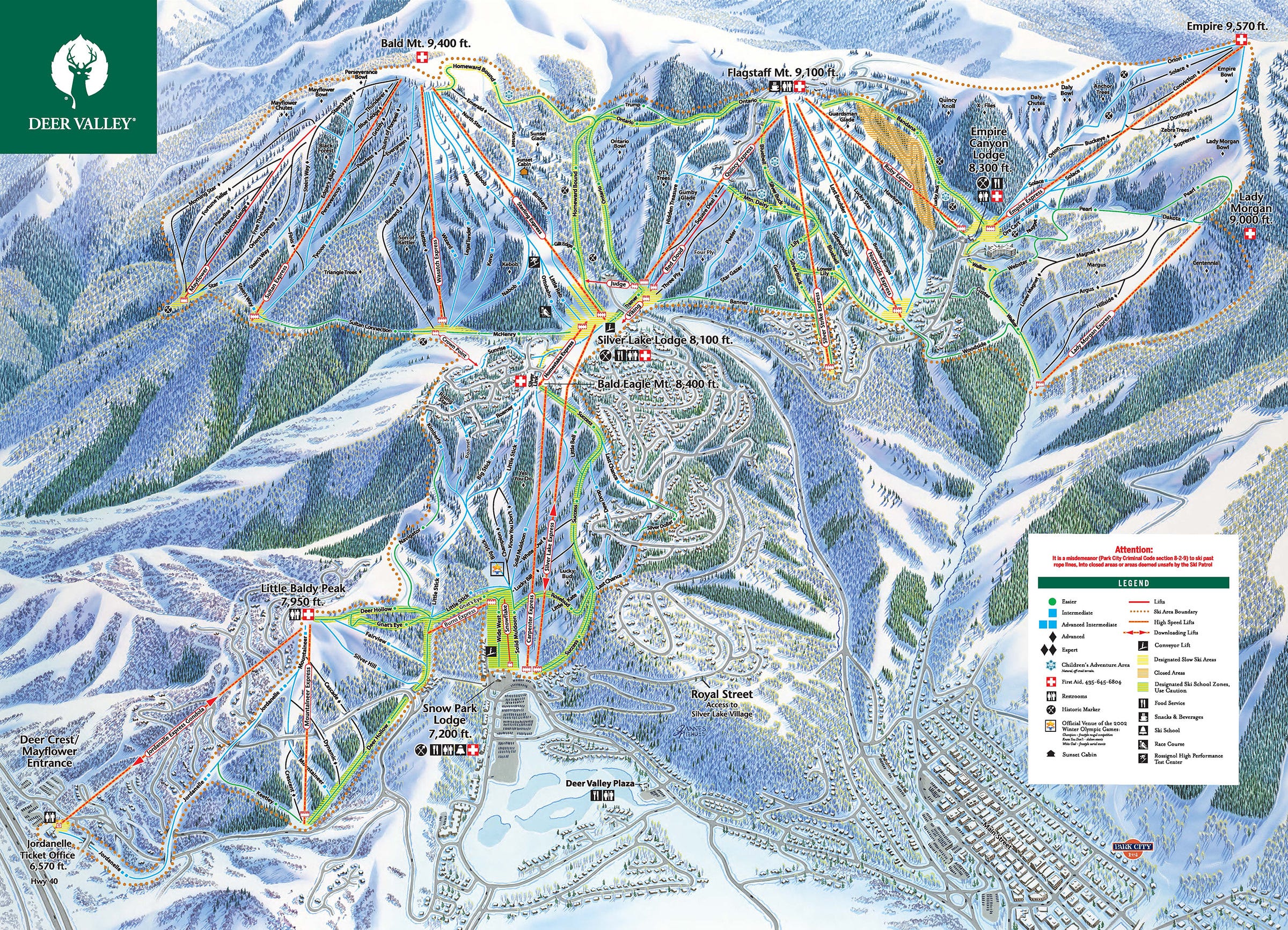
Deer Valley’s trailmap is a little confusing, as it looks as though you can ski from the top of Empire to the bottom of Jordanelle. The resort sits on a series of adjacent hillocks, however, which you can see on this topographic map on ikonpass.com:
Why I interviewed him
There’s a version of reality in which Deer Valley is nothing special. A 2,000-ish-acre bump neighboring Park City, which sprawls more than three times as large. A 300-inch bucket of snow standing meekly against the 500-inch-plus dumptrucks stacking up each winter in the nearby Cottonwoods. Three thousand feet of vertical is compelling, but you can’t ski it all at once, like you can at Snowbird or Park City. Deer Valley could be the Pico of Utah, a pretty good ski area made average by its address among amazing ski areas.
But that’s not how we view the place, because that’s not what Deer Valley is. Deer Valley is an Alterra flagship, so singular that it is the only one of the company’s 16 ski areas excluded from the Ikon Base Pass. The mountain’s $2,890 season pass is the most expensive in America. It has landed in the top three of Ski Magazine’s reader resort rankings for 25 consecutive seasons.
Why? Why is this place so exceptional, so expensive and yet so treasured? Go ahead and list the superficial and the obvious: a fleet of groomers expansive enough to invade Newfoundland, 14 high-speed quads, ski valets, staff to escort your skis onto snow like a prized dachshund. It’s still not so obvious why DV is it. The armada of high-speed lifts, once so novel, are standard-issue Wasatch utilities now. Even Alta has them. Every large ski area grooms widely and well. And slopeside ski check is not so rare as to be a differentiator. At least not in 2023. There are lots of fancy ski areas. Sun Valley would gladly throw down in a groom-off. You could coronate the next queen of England in a Snowbasin bathroom stall. And Beaver Creek gives you a warm cookie at the end of the day. Match that, Deer Valley.
So there is something more subtle than lifts and grooming going on here. Something that has transcended generations of owners and survived the oft-rough entry into corporate Skidom. The place has an essence. Something as pronounced as Little Cottonwood chest-thumping or parkbrah tumbling over Brighton kickers or party-town Park City. Something fiercely distinct yet hard to define.
Have you ever visited the Palace of Versailles? A sprawling and ornate palace rising off 2,500 acres of immaculate grounds a few miles outside of Paris. Built for royals, it is now open to all. To tour the place is to feel both humbled and empowered. Here is this triumph of the human imagination, actualized into a thing too spectacular to comprehend. Yet plain old you can wander and wonder and admire and absorb. And skiing Deer Valley is a little bit like that. Like stumbling into a palace of skiing, unsure what you’re looking at, but amazed at the whole scene.
What we talked about
Doubling Deer Valley’s average annual snowfall; extending the season and why April 23 will be the last day; what it’s like to live among all that snow every single day; where Deer Valley has to do avalanche mitigation; New York ski roots; Vail Mountain in the ‘90s; the vast options for the SoCal skier; how a 20-year career at Disney led to a job running one of America’s best ski resorts; how Disney Bro resembles Ski Bro; the making of The Man Behind the Maps: Legendary Ski Artist James Niehues; how the book was born out of luck at Tamarack, Idaho; blowing away expectations on Kickstarter; why Alterra treats Deer Valley differently than its other resorts from an Ikon Pass access standpoint; going deep on Burns Express; why Deer Valley reoriented the liftline uphill and how that’s changed the skier flow on the mountain; the thrill of flying towers; the reconfigured Snowflake lift; why Burns is and likely always will be more of a transit lift; auto-down restraint bars are here; you’re probably raising the safety bar too early; why Burns got the upgrade before any of Deer Valley’s older high-speed quads; Deer Valley’s huge base-area redevelopment plans; the higher-capacity lifts that could replace the Carpenter and Silver Lake high-speed quads; employee housing; why a base area development isn’t necessarily a play for more skier visits; which lifts could be in line for upgrades next; whether Deer Valley would consider upgrading any of its fixed-grip triples; why there isn’t a ski connection between Deer Valley and Park City, even though they meet at Empire; a potential Deer Valley connection with the rising Mayflower resort; the impact of removing Deer Valley from the Ikon Base Pass; the surprising number of daily lift tickets that Deer Valley still sells, even at $250-plus; and why the resort continues to ban snowboarding.
Why I thought that now was a good time for this interview
Deer Valley spent their offseason planting this beauty on the mountainside:
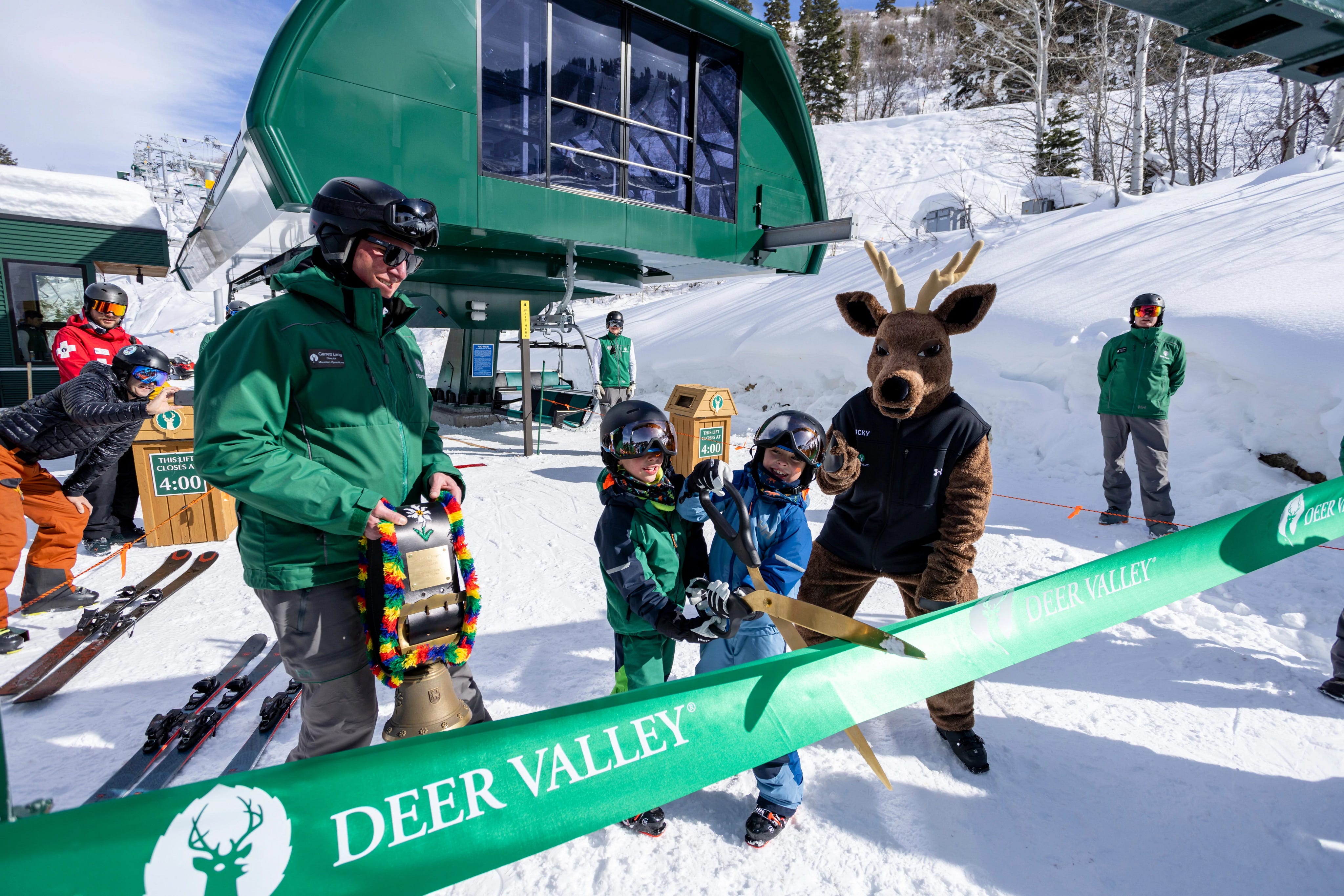
The 190-vertical-foot Doppelmayr high-speed quad was the cornerstone Deer Valley’s re-imagined Snow Park beginner terrain. Last year, the small terrain pod looked like this:
The old Burns lift, a Yan double that dated to the resort’s 1981 opening, ran straight up the fall line. It paralleled the shorter Snowflake lift, which loaded halfway up the trail. A series of magic carpets sat below Snowflake.
That’s all changed. Old Burns is gone, clearing a beginner-friendly skiway. Deer Valley used parts from Burns to lengthen Snowflake all the way to the base. They then moved the existing carpets looker’s left, along the old Burns line. A series of four progression carpets now climb the incline.
New Burns serves an entirely different purpose from Old Burns. Rather than simply hauling beginners up Wide West, as the old lift did, it transports them up to the Deer Hollow trail, which they can then ski down to Mountaineer Express to access the Little Baldy Peak pod. Prior to this change, beginners had no easy way to access Little Baldy – they had to either ride the Carpenter high-speed quad to the summit of Bald Eagle Mountain and take the Big Stick and Little Stick trails to Deer Hollow; ride Silver Lake Express and ski down to the Crown Point triple and then up to blue-square Kimberly and green-circle Navigator; or catch a ride over to the Jordanelle ticket office and ride the gondola up. Mostly, they didn’t do that, and since that terrain holds less appeal to more advanced skiers, it was largely underutilized.
Bennett admitted that New Burns is mostly a transit lift to get skiers up to the Little Baldy terrain. Skiers can lap Gnat’s Eye, but it’s a narrow and not very interesting trail, and so most don’t. But as another brick in Palace DV, the lift accomplishes exactly what it’s supposed to. And it’s a gorgeous machine:
I suspect, however, that Burns is simply an anchor for Deer Valley’s far larger proposed redevelopment of its Snow Park Base area. Right now, skiers arrive to parking lots, as they do in most of U.S. America, and walk up to a handful of base buildings and a pair of high-speed quads. It’s an bland entrance to a remarkable ski resort:
Deer Valley would cover these parking lots with a ski-in-ski-out mixed-use village. Cars would go underground. Retail, restaurants, residences, and rental units would rise above pedestrian streets. Carpenter and Silver Lake would extend into the village, the former replaced by a new high-speed quad or six-pack, the latter by a gondola:
Here’s a clearer image of where the lifts could sit in relation to their current load points:
We’re a long way out from this transformation. The estimated project completion date is 2029. But this development would transform Deer Valley, infusing it with a sense of place beyond the trail footprint. The resort happens to reside in Park City, one of the liveliest ski towns in North America. For decades, Deer Valley has ceded streetlife to the municipality. But there’s no reason it has to. Like sister resorts Steamboat, Winter Park, Palisades Tahoe, and Crystal, the Wasatch fancypants is evolving into something better connected to the community around it and anchored in the current moment, in which we are at long last deprioritizing the personal vehicle and building people-first places that we can all enjoy.
What I got wrong
I noted that Park City Mountain Resort was “twice as large” as Deer Valley, but it’s actually quite a bit bigger: 7,300 acres to Deer Valley’s 2,026 – that’s 2.3 times as big.
Why you should ski Deer Valley
Yes groomers blah blah whatever. Honestly this is not a thing I care about when I travel West. But I do like this:
And this:
And this:
Not so much this, but it’s here if you’re psychotic:
No, it’s not Snowbird. But it’s Utah. The snow is light and fine. The trail network sprawls. If you can’t find something fun in 2,000 acres, the problem is not the mountain. Plus, look again at the trailmap – every peak has like four high-speed lifts stringing you to the top. The potential to rack vert here is amazing.
Podcast Notes
On the long season
Bennett and I briefly discussed a Snowbasin tweet calling out skiers for not showing up after the resort extended its season. Here it is:
On The Man Behind the Maps
If you’re reading this newsletter, there’s a better than 80 percent chance that someone has stuffed a copy of The Man Behind the Maps, a tome archiving the trailmap art of James Niehues, into your Christmas stocking at some point over the last four years. Bennett, as it turns out, was the muscle behind the book, reaching out to Niehues and convincing him to compile the work, then pulling together a global network to print and distribute it. If you’re not familiar with this work of art, check it out:
On Mayflower Resort
Did you know that a major new public U.S. ski resort is under construction at this moment? And that this resort will cover 4,300 acres on a 3,200-foot vertical drop served by 18 aerial lifts? And that this resort is exactly next door to Deer Valley? And that this is all amazingly getting absolutely no coverage while a couple of dingbats in Park City spin themselves into a hissyfit over Vail’s attempts to upgrade two chairlifts and a considerably larger contingent of dingbats fights the most serious attempt to untangle traffic in Little Cottonwood Canyon in decades by assaulting a gondola proposal as though they were defending the Alamo?
It’s true. It’s called Mayflower. Watch this video full of hyperbole that’s clearly made for people who know almost nothing about skiing to see for yourself:
That this is actually happening - that we are really about to have a brand-new, major ski resort in an over-skied slice of U.S. America that desperately needs more capacity - is a freaking miracle. Bennett and I don’t dig too deeply into this project, but we do discuss it in this context: when Mayflower goes live, there is a very good chance that Deer Valley could operate it. And if that happens, well, no snowboarding Brah. Because Deer Values or something. I’m not a fan of snowboarding bans, but I am a fan of building more ski resorts, so I’ll take the win.
On the lack of a Deer Valley/Park City ski Connection
You can ski between Snowbird and Alta, even though one is owned by Powdr Corp and the other is owned by a clandestine group of snow ninjas. You can ski between Brighton and Solitude, even though one is owned by Boyne Resorts and the other is owned by Alterra. But you cannot ski between Deer Valley and Park City, even if you have an Epic Pass and an Ikon Pass, even though they boundary up to one another on Empire Peak:
A patrol shack sits atop Empire, halting all who would pass. Locals call this the “Berlin Wall.” I’m not sure what the sense of it is. Deer Valley has done a pretty solid job of restricting ticket availability. I’m pretty sure the number of folks who would add on a DV ticket just for a few runs is nominal. However, there could be enormous environmental benefits to such a connection. When I was skiing Deer Valley, I had to take a long shuttle ride through congested weekend traffic both ways to ski half a day at Park City. Imagine if I could have eliminated two surface transit trips by simply skiing over the pass? Not that this would have eliminated these shuttles, necessarily, as other folks rode them as well, but if a critical mass of people decided to use skis and already-spinning lifts to move across the megaplex rather than surface transit, that could have a material impact on the town’s notorious congestion.
And imagine skiing all of this in one go:
The Storm publishes year-round, and guarantees 100 articles per year. This is article 37/100 in 2023, and number 423 since launching on Oct. 13, 2019. Want to send feedback? Reply to this email and I will answer (unless you sound insane, or, more likely, I just get busy). You can also email skiing@substack.com.







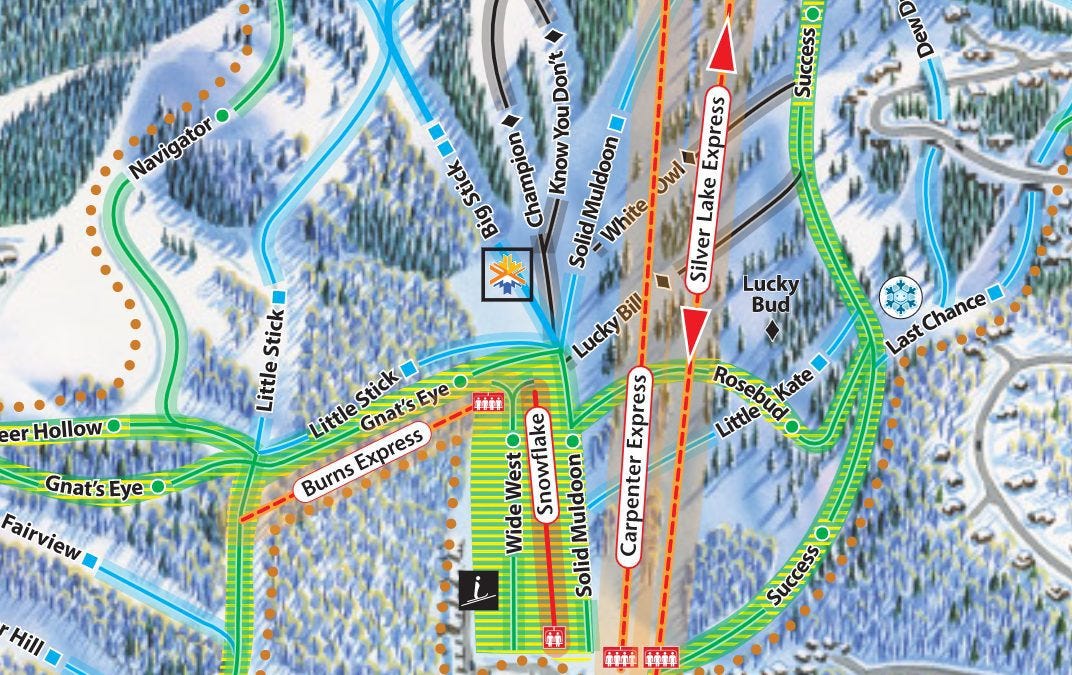
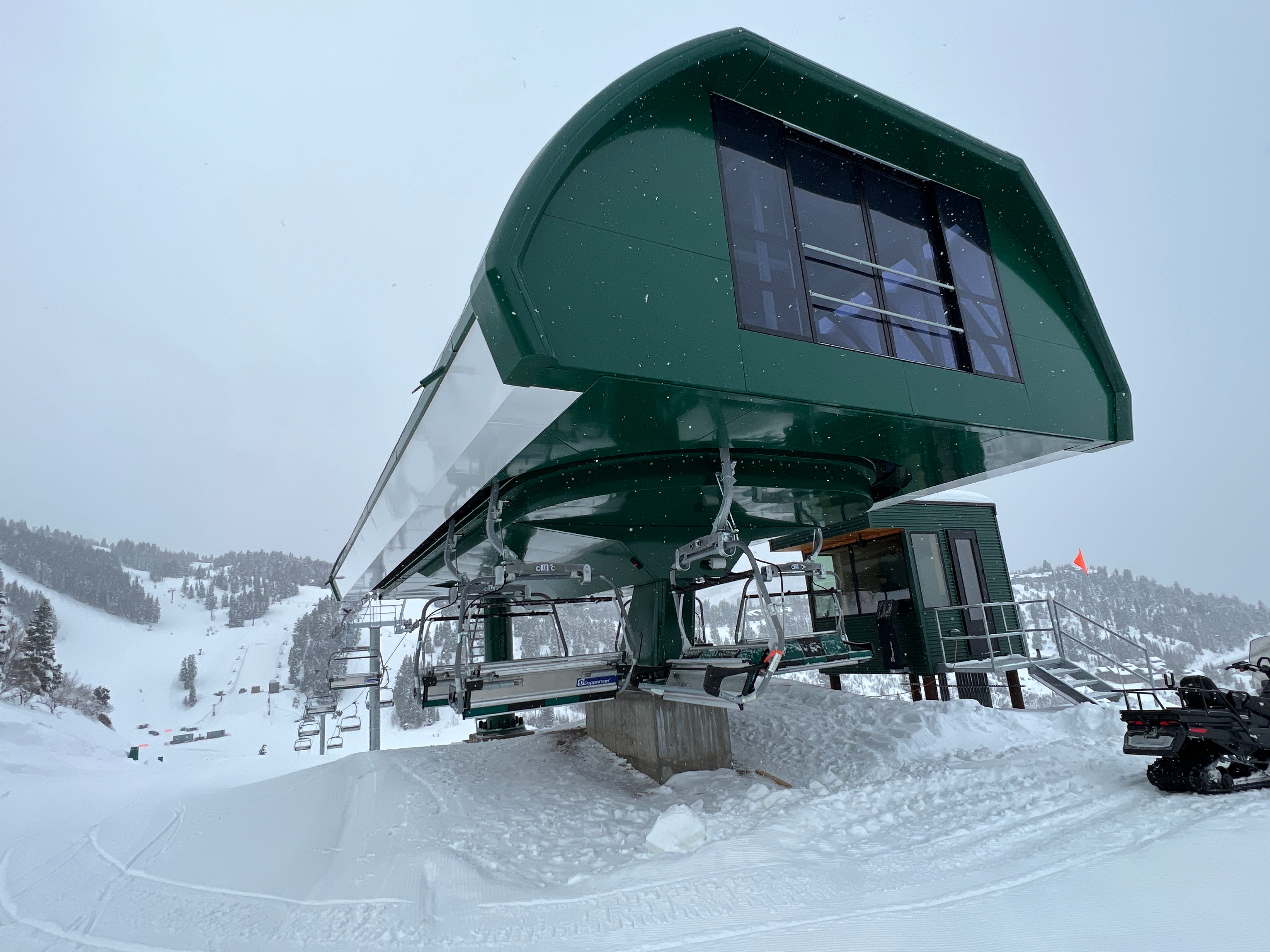


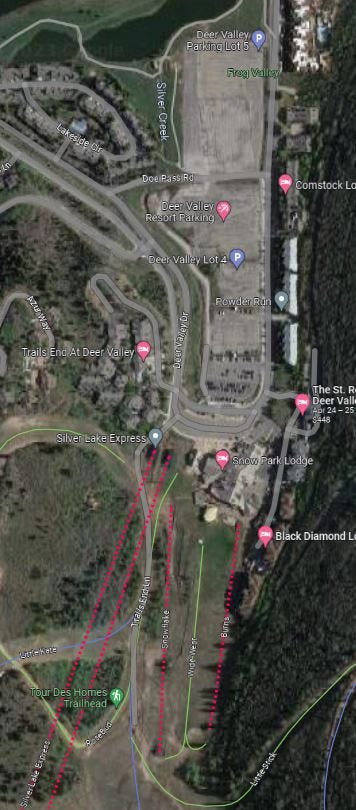
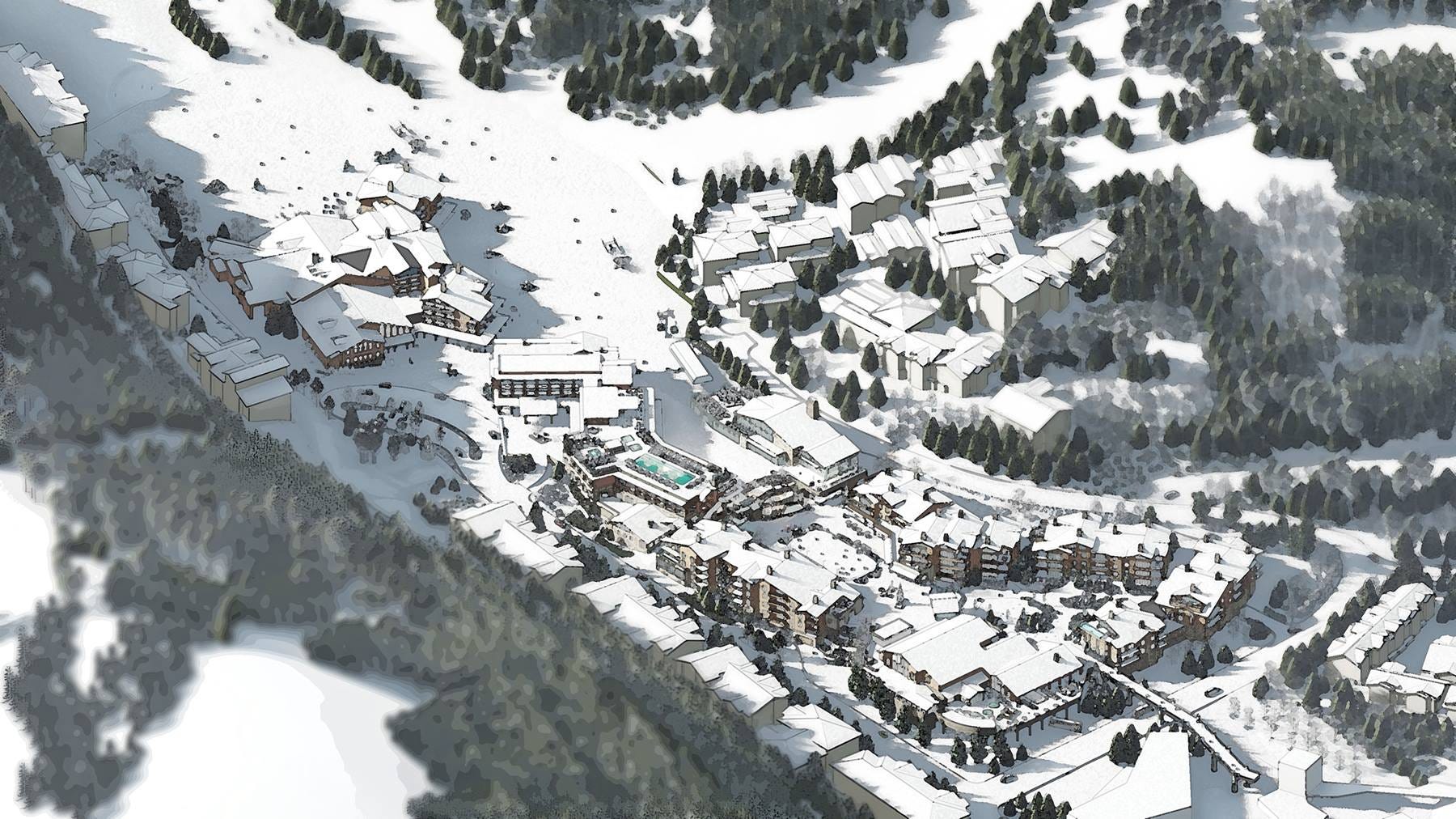
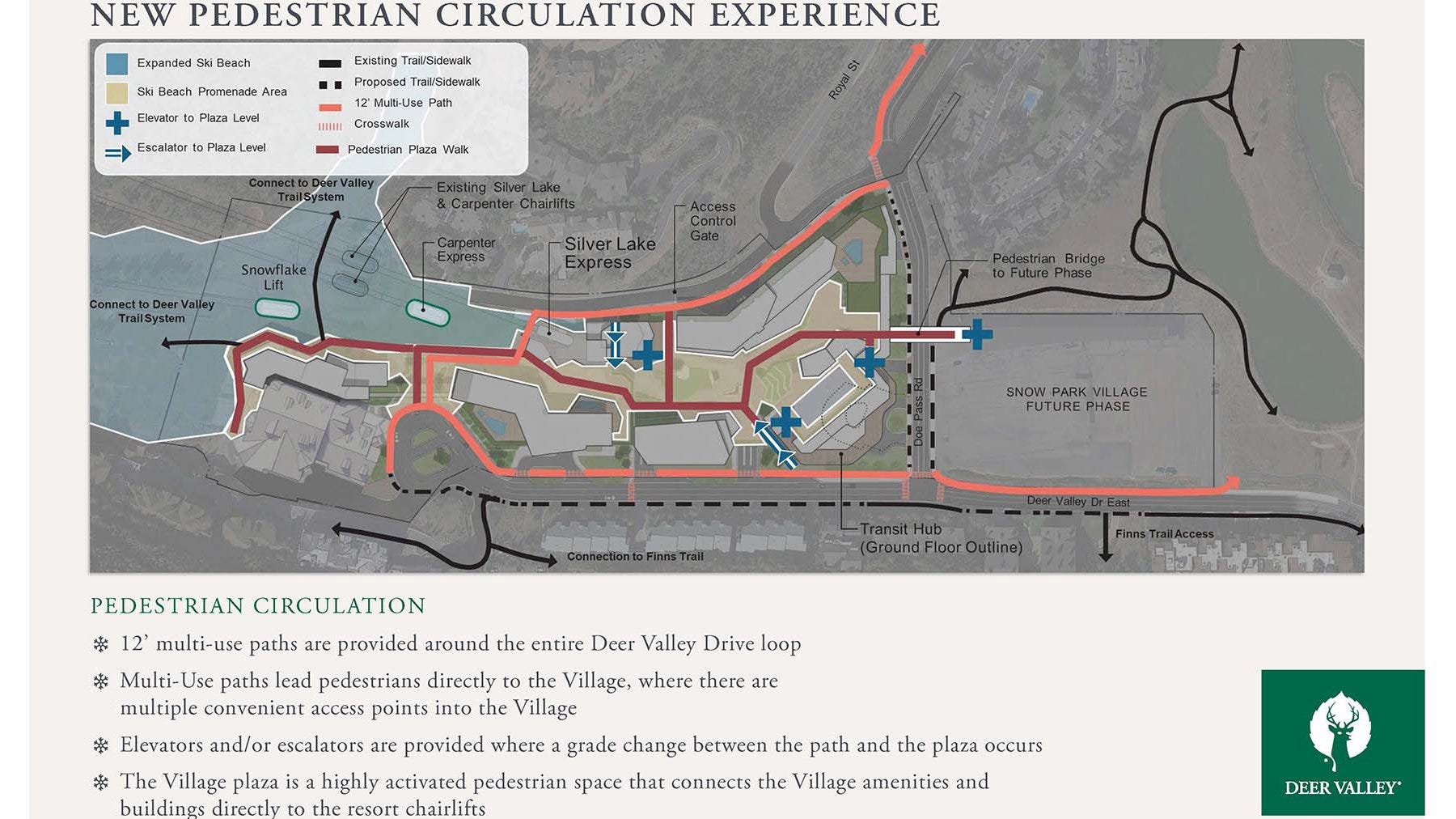
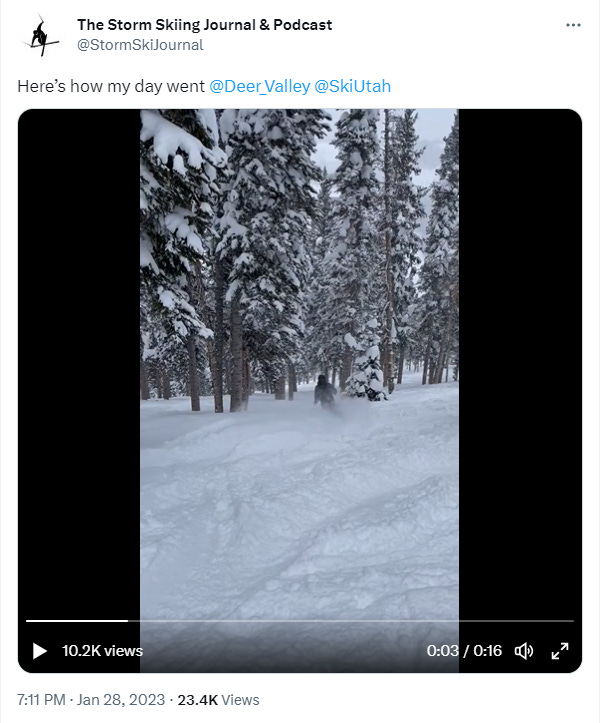

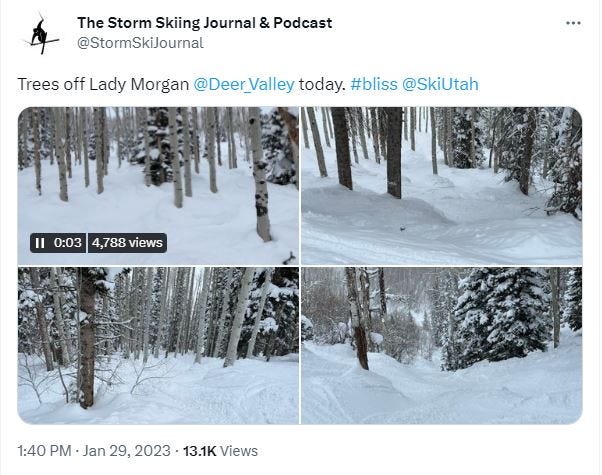
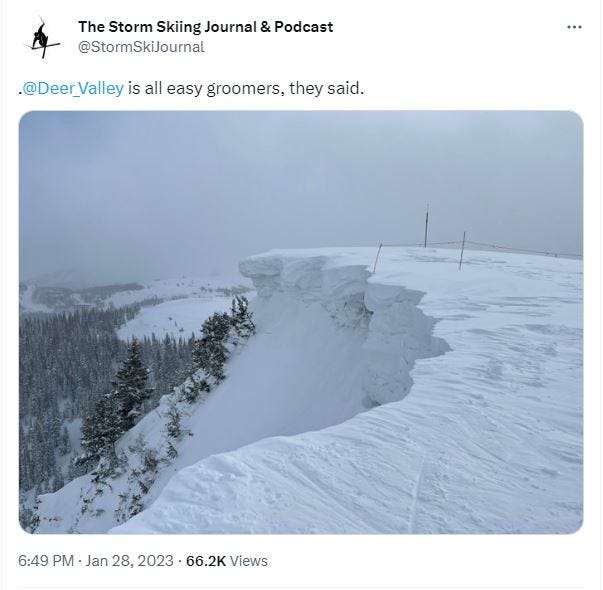

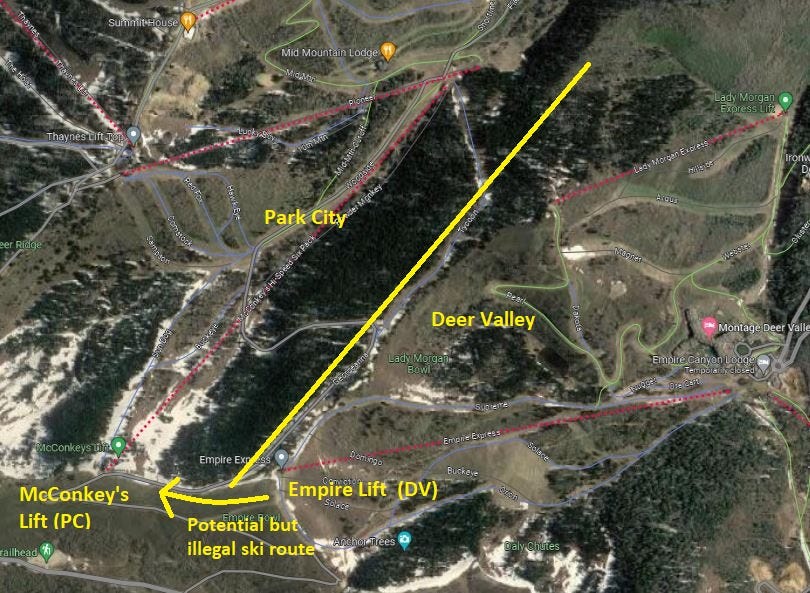








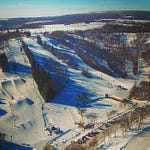


Podcast #124: Deer Valley President & COO Todd Bennett